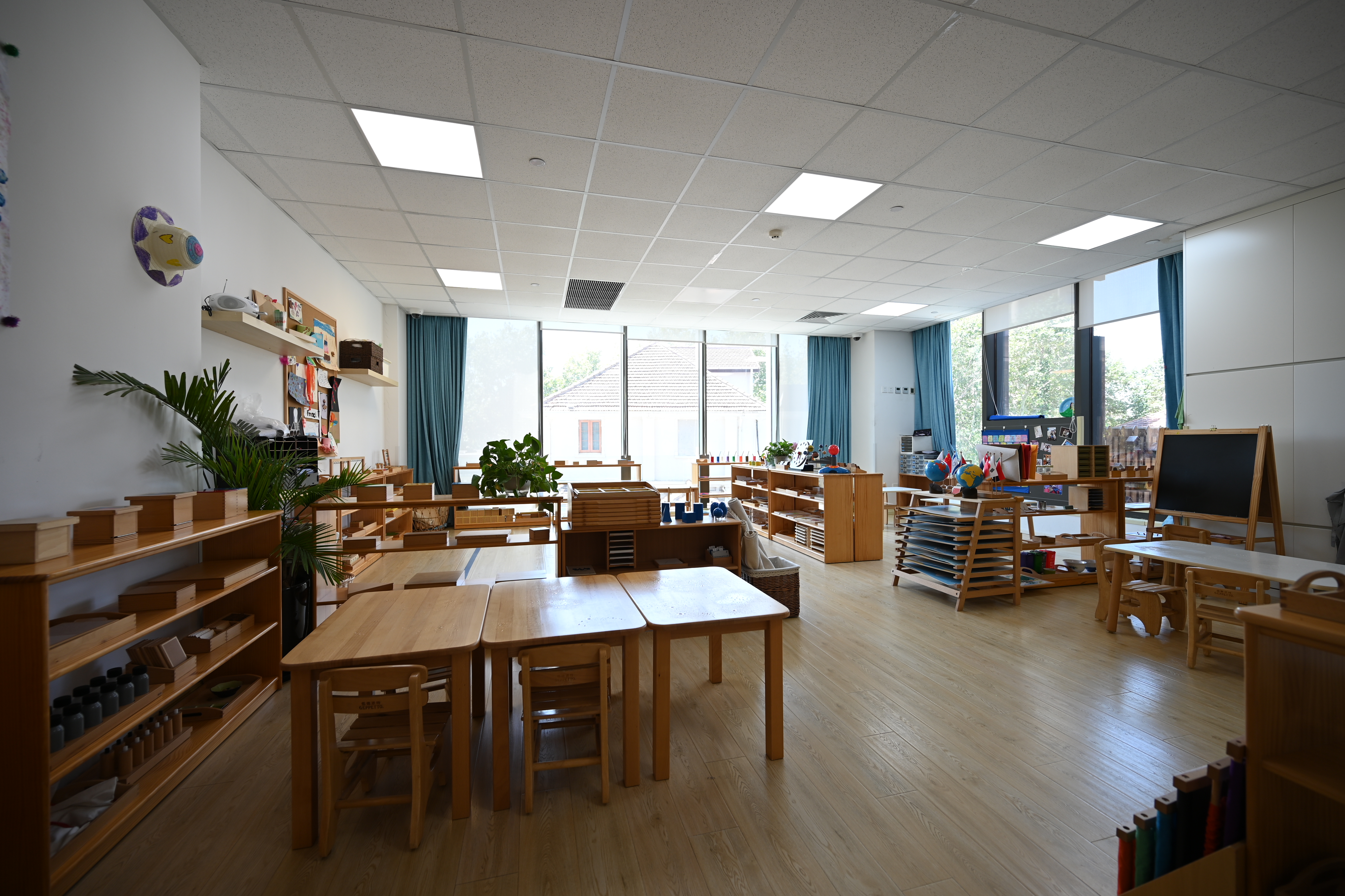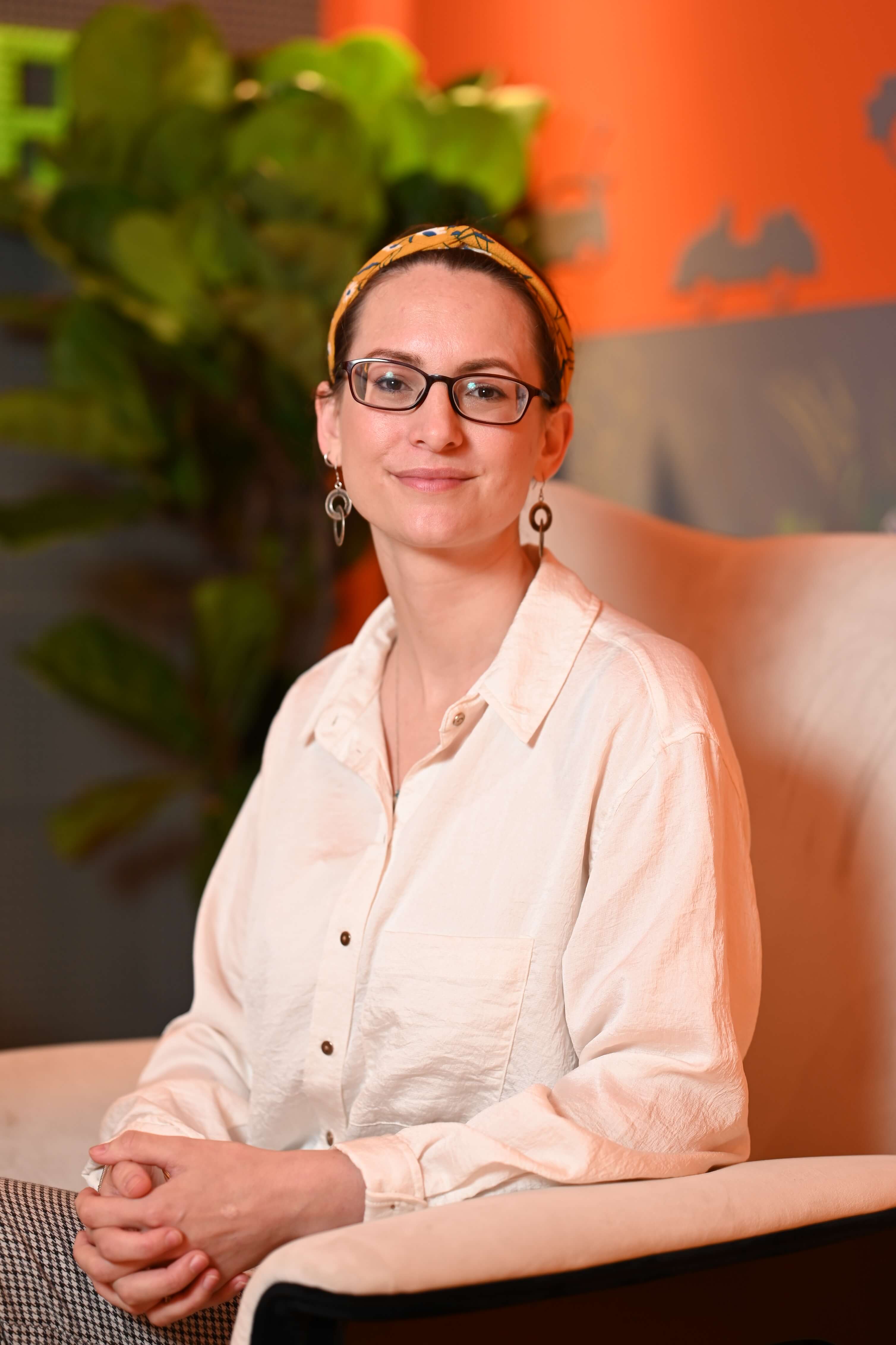
Let Emily Dunhill, Director of Apple Montessori, explain the Montessori method of raising well-rounded multilingual children.
One of the benefits of living in another country is the ability to immerse in a new culture. In a multicultural city such as Shanghai, many expatriate kids pick up a new language easily. But when it comes to learning, how do you incorporate using a foreign language to teach in a specific pedagogy such as Montessori? Speaking to Emily Dunhill, Director at Apple Montessori, she gives us insight as to how a Montessori classroom can adapt for bilingual teaching.

There’s nothing in the Montessori curriculum that dictates which language it should be taught in. You could roll it out in any language, which people do around the world. We have specific teaching content each day that is delivered entirely in English or Mandarin, as well as designating staff members to speak in either English or Mandarin, to ensure the environment is bilingual throughout the day. As far as the Montessori curriculum goes, there’s not any conflict. It just means the typical Montessori work time is conducted in both English and Mandarin, and that the ‘language’ area of the classroom is filled with materials to practice both languages.
We also have a bilingual curriculum featuring a daily English and Mandarin lesson, conducted either by the foreign teacher or the Chinese teacher. This class includes vocabulary, grammar, drama, songs, stories, crafts and literacy work every week. This will be delivered without translation, ensuring students focus on the language at hand and learn the content.
We adapt our teaching style to adhere to the Montessori principles whilst immersing children in both languages. Montessori is about following and guiding the child while they explore a carefully prepared environment. During Montessori work time, there’ll be interaction in both languages with teachers but also with each other. We have a big international student base at Apple Montessori.
As we have both Chinese students and foreign students, foreign students want to learn Mandarin as a second language and Chinese students want to learn English as a second language. If teachers are constantly translating, they are not facilitating learning for either because students will just rely on their native tongue. So, the foreign teacher will communicate in English and the Chinese teacher will communicate in Mandarin, and English class will be delivered entirely in English and Chinese class entirely in Mandarin. This allows the child to identify which language to use with which person and practice with them throughout the day, and ensures they receive the teaching content of both languages.
There are five areas in a Montessori curriculum and the classroom will have all the materials laid out and divided into the five subject areas. Language is one of them. If you were in a Spanish classroom, you would see an area that is dedicated to Spanish grammar, Spanish vocabulary, and Spanish literacy. At Apple Montessori, the language area will have materials to practice all language skills in both Mandarin and English.
If the self-directed child chooses to work on language that day, they will have access to all those materials to choose from. For older children between 3 to 6 years old, the language area will include more literacy work such as wooden characters, movable alphabets, tools to practice writing and spelling, simple books in both languages etc. Then our separate bilingual curriculum will also have one session a week dedicated to English and Mandarin literacy and pre-literacy skills (depending on the age of students).
All our students can get bilingual language lessons from two places each day, once during the Montessori time and again during the twice daily circle time.

When the children are in their final year, usually at 5 years old, we provide a transition class in lieu of nap time each day. This class helps them adjust to a traditional classroom setting, the instruction is more of a teacher-centred format but is still lots of fun.
This daily class also helps prepare them academically. Children will learn phonics, reading and writing and practice English speaking in the English classes. In Mandarin class children will focus on mathematics and writing. There’s lots of songs, games, and arts and crafts to engage the kids. To ensure children are reaching goals agreed upon by teachers and parents, we also conduct an assessment for transitioning students’ midway through the semester, and we have a separate parent teacher meeting to go over the results and action plan. This program is separate from the classroom schedule and delivered by our transition teaching team. The transition year is very important, that’s why we expand assessment and parent communication during that year, making sure we know which school the children are going to and that we’re supporting them in every way we can.
Emily Dunhill, Director at Apple Montessori
“There’s nothing in the Montessori curriculum that dictates which language it should be taught in.”
Apple Montessori
Address: 290 Jianguo West Road, Xuhui District
Tel: 5077 1762
Email: admin@applemontessori.org
Advertorial